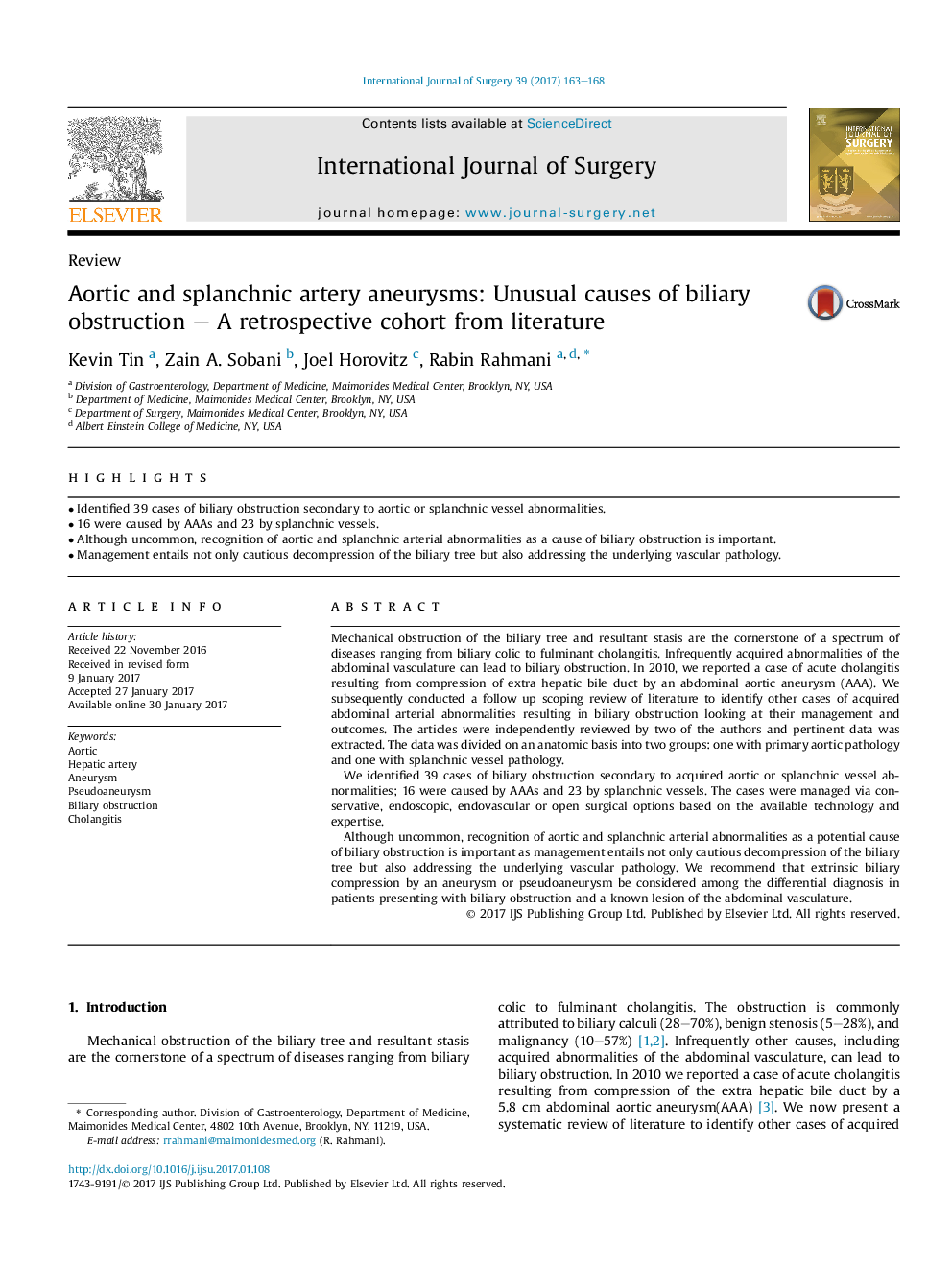| کد مقاله | کد نشریه | سال انتشار | مقاله انگلیسی | نسخه تمام متن |
|---|---|---|---|---|
| 5732088 | 1611940 | 2017 | 6 صفحه PDF | دانلود رایگان |

- Identified 39 cases of biliary obstruction secondary to aortic or splanchnic vessel abnormalities.
- 16 were caused by AAAs and 23 by splanchnic vessels.
- Although uncommon, recognition of aortic and splanchnic arterial abnormalities as a cause of biliary obstruction is important.
- Management entails not only cautious decompression of the biliary tree but also addressing the underlying vascular pathology.
Mechanical obstruction of the biliary tree and resultant stasis are the cornerstone of a spectrum of diseases ranging from biliary colic to fulminant cholangitis. Infrequently acquired abnormalities of the abdominal vasculature can lead to biliary obstruction. In 2010, we reported a case of acute cholangitis resulting from compression of extra hepatic bile duct by an abdominal aortic aneurysm (AAA). We subsequently conducted a follow up scoping review of literature to identify other cases of acquired abdominal arterial abnormalities resulting in biliary obstruction looking at their management and outcomes. The articles were independently reviewed by two of the authors and pertinent data was extracted. The data was divided on an anatomic basis into two groups: one with primary aortic pathology and one with splanchnic vessel pathology.We identified 39 cases of biliary obstruction secondary to acquired aortic or splanchnic vessel abnormalities; 16 were caused by AAAs and 23 by splanchnic vessels. The cases were managed via conservative, endoscopic, endovascular or open surgical options based on the available technology and expertise.Although uncommon, recognition of aortic and splanchnic arterial abnormalities as a potential cause of biliary obstruction is important as management entails not only cautious decompression of the biliary tree but also addressing the underlying vascular pathology. We recommend that extrinsic biliary compression by an aneurysm or pseudoaneurysm be considered among the differential diagnosis in patients presenting with biliary obstruction and a known lesion of the abdominal vasculature.
Journal: International Journal of Surgery - Volume 39, March 2017, Pages 163-168